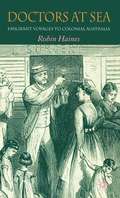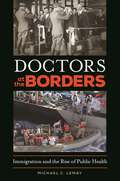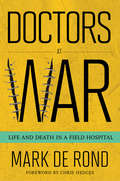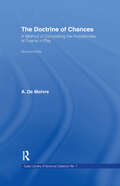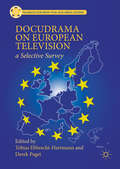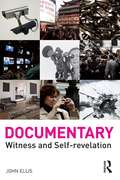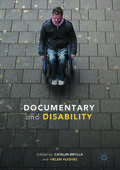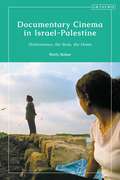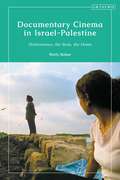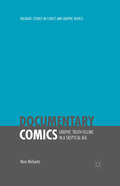- Table View
- List View
Doctors and Demonstrators: How Political Institutions Shape Abortion Law in the United States, Britain, and Canada
by Drew HalfmannSince Roe v. Wade, abortion has continued to be a divisive political issue in the United States. In contrast, it has remained primarily a medical issue in Britain and Canada despite the countries’ shared heritage. Doctors and Demonstrators looks beyond simplistic cultural or religious explanations to find out why abortion politics and policies differ so dramatically in these otherwise similar countries. Drew Halfmann argues that political institutions are the key. In the United States, federalism, judicial review, and a private health care system contributed to the public definition of abortion as an individual right rather than a medical necessity. Meanwhile, Halfmann explains, the porous structure of American political parties gave pro-choice and pro-life groups the opportunity to move the issue onto the political agenda. A groundbreaking study of the complex legal and political factors behind the evolution of abortion policy, Doctors and Demonstrators will be vital for anyone trying to understand this contentious issue.
Doctors and Demonstrators: How Political Institutions Shape Abortion Law in the United States, Britain, and Canada
by Drew HalfmannSince Roe v. Wade, abortion has continued to be a divisive political issue in the United States. In contrast, it has remained primarily a medical issue in Britain and Canada despite the countries’ shared heritage. Doctors and Demonstrators looks beyond simplistic cultural or religious explanations to find out why abortion politics and policies differ so dramatically in these otherwise similar countries. Drew Halfmann argues that political institutions are the key. In the United States, federalism, judicial review, and a private health care system contributed to the public definition of abortion as an individual right rather than a medical necessity. Meanwhile, Halfmann explains, the porous structure of American political parties gave pro-choice and pro-life groups the opportunity to move the issue onto the political agenda. A groundbreaking study of the complex legal and political factors behind the evolution of abortion policy, Doctors and Demonstrators will be vital for anyone trying to understand this contentious issue.
Doctors and Demonstrators: How Political Institutions Shape Abortion Law in the United States, Britain, and Canada
by Drew HalfmannSince Roe v. Wade, abortion has continued to be a divisive political issue in the United States. In contrast, it has remained primarily a medical issue in Britain and Canada despite the countries’ shared heritage. Doctors and Demonstrators looks beyond simplistic cultural or religious explanations to find out why abortion politics and policies differ so dramatically in these otherwise similar countries. Drew Halfmann argues that political institutions are the key. In the United States, federalism, judicial review, and a private health care system contributed to the public definition of abortion as an individual right rather than a medical necessity. Meanwhile, Halfmann explains, the porous structure of American political parties gave pro-choice and pro-life groups the opportunity to move the issue onto the political agenda. A groundbreaking study of the complex legal and political factors behind the evolution of abortion policy, Doctors and Demonstrators will be vital for anyone trying to understand this contentious issue.
Doctors and Demonstrators: How Political Institutions Shape Abortion Law in the United States, Britain, and Canada
by Drew HalfmannSince Roe v. Wade, abortion has continued to be a divisive political issue in the United States. In contrast, it has remained primarily a medical issue in Britain and Canada despite the countries’ shared heritage. Doctors and Demonstrators looks beyond simplistic cultural or religious explanations to find out why abortion politics and policies differ so dramatically in these otherwise similar countries. Drew Halfmann argues that political institutions are the key. In the United States, federalism, judicial review, and a private health care system contributed to the public definition of abortion as an individual right rather than a medical necessity. Meanwhile, Halfmann explains, the porous structure of American political parties gave pro-choice and pro-life groups the opportunity to move the issue onto the political agenda. A groundbreaking study of the complex legal and political factors behind the evolution of abortion policy, Doctors and Demonstrators will be vital for anyone trying to understand this contentious issue.
Doctors and the State: The Struggle for Professional Control in Zimbabwe (Routledge Revivals)
by Dorothy Mutizwa-MangizaPublished in 1999, the main aim of this text is to examine the nature of professional control, medical practice and the state of health services in a post-colonial state and the medical profession in Zimbabwe since 1980. The text reviews the theories of professions and professional control and medical practice, it concludes by examining the nature of the Zimbabwean state. The chapter on methodology highlights some of the ethical dilemmas of carrying out research in developing countries. The book then goes on to review health services and policies of both the colonial and post-colonial governments in Zimbabwe. Three chapters discuss the nature of medical practice and the constraints encountered by doctors in their work, the terms and conditions of service under which doctors work, and the nature of medical regulation of education, licensing and discipline including issues such as malpractice and litigation. Throughout the book, comparisons are made with situations in other countries, both developed and developing, and the main conclusions of the book are that medical doctors in Zimbabwe have minimal administrative restrictions on the type of treatment which they can carry out but the unavailability and breakdown of essential equipment, shortages of essential drugs and staff limit the doctors' autonomy to carry out the treatment that they consider necessary.
Doctors and the State: The Struggle for Professional Control in Zimbabwe (Routledge Revivals)
by Dorothy Mutizwa-MangizaPublished in 1999, the main aim of this text is to examine the nature of professional control, medical practice and the state of health services in a post-colonial state and the medical profession in Zimbabwe since 1980. The text reviews the theories of professions and professional control and medical practice, it concludes by examining the nature of the Zimbabwean state. The chapter on methodology highlights some of the ethical dilemmas of carrying out research in developing countries. The book then goes on to review health services and policies of both the colonial and post-colonial governments in Zimbabwe. Three chapters discuss the nature of medical practice and the constraints encountered by doctors in their work, the terms and conditions of service under which doctors work, and the nature of medical regulation of education, licensing and discipline including issues such as malpractice and litigation. Throughout the book, comparisons are made with situations in other countries, both developed and developing, and the main conclusions of the book are that medical doctors in Zimbabwe have minimal administrative restrictions on the type of treatment which they can carry out but the unavailability and breakdown of essential equipment, shortages of essential drugs and staff limit the doctors' autonomy to carry out the treatment that they consider necessary.
Doctors at Sea: Emigrant Voyages to Colonial Australia
by R. HainesIn this engaging tale of movement from one hemisphere to another, we see doctors at work attending to their often odious and demanding duties at sea, in quarantine, and after arrival. The book shows, in graphic detail, just why a few notorious voyages suffered tragic loss of life in the absence of competent supervision. Its emphasis, however, is on demonstrating the extent to which the professionalism of the majority of surgeon superintendents, even on ships where childhood epidemics raged, led to the extraordinary saving of life on the Australian route in the Victorian era.
Doctors at the Borders: Immigration and the Rise of Public Health
by Michael C. LeMayA unique resource for the general public and students interested in immigration and public health, this book presents a comprehensive history of public health and draws 10 key lessons for current immigration and health policymakers.The period of 1820 to 1920 was one of mass migration to the United States from other nations of origin. This century-long period served to develop modern medicine with the acceptance of the germ theory of disease and the lessons learned from how immigration officials and doctors of the United States Marine Hospital Service (USMHS) confronted six major pandemic diseases: bubonic plague, cholera, influenza, smallpox, trachoma, and yellow fever. This book provides a narrative history that relates how immigration doctors of the USMHS developed devices and procedures that greatly influenced the development of public health. It illuminates the distinct links between immigration policy and public health policy and distinguishes ten key lessons learned nearly 100 years ago that are still relevant to coping with current public health policy issues.By re-examining the experiences of doctors at three U.S. immigration/quarantine stations—Angel Island, Ellis Island, and New Orleans—in the early 19th century through the early 20th century, Doctors at the Borders: Immigration and the Rise of Public Health analyzes the successes and failures of these medical practitioners' pioneering efforts to battle pandemic diseases and identifies how the hard-won knowledge from that relatively primitive period still informs how public health policy should be written today. Readers will understand how the USMHS doctors helped shape the very development of U.S. public health and modern scientific medicine, and see the need for international cooperation in the face of today's global threats of pandemic diseases.
Doctors at the Borders: Immigration and the Rise of Public Health
by Michael C. LeMayA unique resource for the general public and students interested in immigration and public health, this book presents a comprehensive history of public health and draws 10 key lessons for current immigration and health policymakers.The period of 1820 to 1920 was one of mass migration to the United States from other nations of origin. This century-long period served to develop modern medicine with the acceptance of the germ theory of disease and the lessons learned from how immigration officials and doctors of the United States Marine Hospital Service (USMHS) confronted six major pandemic diseases: bubonic plague, cholera, influenza, smallpox, trachoma, and yellow fever. This book provides a narrative history that relates how immigration doctors of the USMHS developed devices and procedures that greatly influenced the development of public health. It illuminates the distinct links between immigration policy and public health policy and distinguishes ten key lessons learned nearly 100 years ago that are still relevant to coping with current public health policy issues.By re-examining the experiences of doctors at three U.S. immigration/quarantine stations—Angel Island, Ellis Island, and New Orleans—in the early 19th century through the early 20th century, Doctors at the Borders: Immigration and the Rise of Public Health analyzes the successes and failures of these medical practitioners' pioneering efforts to battle pandemic diseases and identifies how the hard-won knowledge from that relatively primitive period still informs how public health policy should be written today. Readers will understand how the USMHS doctors helped shape the very development of U.S. public health and modern scientific medicine, and see the need for international cooperation in the face of today's global threats of pandemic diseases.
Doctors at War: Life and Death in a Field Hospital (The Culture and Politics of Health Care Work)
by Mark de RondDoctors at War is a candid account of a trauma surgical team based, for a tour of duty, at a field hospital in Helmand, Afghanistan. Mark de Rond tells of the highs and lows of surgical life in hard-hitting detail, bringing to life a morally ambiguous world in which good people face impossible choices and in which routines designed to normalize experience have the unintended effect of highlighting war’s absurdity. With stories that are at once comical and tragic, de Rond captures the surreal experience of being a doctor at war. He lifts the cover on a world rarely ever seen, let alone written about, and provides a poignant counterpoint to the archetypical, adrenaline-packed, macho tale of what it is like to go to war. Here the crude and visceral coexist with the tender and affectionate. The author tells of well-meaning soldiers at hospital reception, there to deliver a pair of legs in the belief that these can be reattached to their comrade, now in mid-surgery; of midsummer Christmas parties and pancake breakfasts and late-night sauna sessions; of interpersonal rivalries and banter; of caring too little or too much; of tenderness and compassion fatigue; of hell and redemption; of heroism and of playing God. While many good firsthand accounts of war by frontline soldiers exist, this is one of the first books ever to bring to life the experience of the surgical teams tasked with mending what war destroys.
The Doctor's Garden: Medicine, Science, and Horticulture in Britain
by Clare HickmanA richly illustrated exploration of how late Georgian gardens associated with medical practitioners advanced science, education, and agricultural experimentation As Britain grew into an ever-expanding empire during the late eighteenth and early nineteenth centuries, new and exotic botanical specimens began to arrive within the nation’s public and private spaces. Gardens became sites not just of leisure, sport, and aesthetic enjoyment, but also of scientific inquiry and knowledge dissemination. Medical practitioners used their botanical training to capitalize on the growing fashion for botanical collecting and agricultural experimentation in institutional, semipublic, and private gardens across Britain. This book highlights the role of these medical practitioners in the changing use of gardens in the late Georgian period, marked by a fluidity among the ideas of farm, laboratory, museum, and garden. Placing these activities within a wider framework of fashionable, scientific, and economic interests of the time, historian Clare Hickman argues that gardens shifted from predominately static places of enjoyment to key gathering places for improvement, knowledge sharing, and scientific exploration.
The Doctor’s World: The Life and Times of Claver Morris, 1659 - 1727
by Paul HylandThis is the story of the extraordinary life of Claver Morris and the society in which he lived. After his marriage at Chelsea in 1685, Claver Morris moved to Somerset where he established an outstanding reputation for his work as a physician. His diaries show us how he worked with apothecaries and surgeons, and travelled widely to treat all kind of patients, from the children of the poor to those of the landed gentry. The diaries also tell us about the joys and pains of Claver’s personal and family life, and of his various intrigues. Claver Morris was a man of many talents: immensely enterprising, knowledgeable, sociable and loving. His house was always filled with music, guests and entertainments. Yet he was often faced with disputes and troubles partly of his own making — as when he courted a bishop’s daughter, or stole some land to build his Queen Anne house. The Doctor’s World provides a unique portrait of a physician living and working through the political and religious turmoils that beset the nation at the turn of the eighteenth century. Tales of medical treatments, clandestine marriages and self-serving priests are entwined with famous acts of treason and rebellion, and the pleasures and tragedies of daily life. This meticulously researched book will appeal to all readers of social, political, medical and family history.
The Doctor’s World: The Life and Times of Claver Morris, 1659 - 1727
by Paul HylandThis is the story of the extraordinary life of Claver Morris and the society in which he lived. After his marriage at Chelsea in 1685, Claver Morris moved to Somerset where he established an outstanding reputation for his work as a physician. His diaries show us how he worked with apothecaries and surgeons, and travelled widely to treat all kind of patients, from the children of the poor to those of the landed gentry. The diaries also tell us about the joys and pains of Claver’s personal and family life, and of his various intrigues. Claver Morris was a man of many talents: immensely enterprising, knowledgeable, sociable and loving. His house was always filled with music, guests and entertainments. Yet he was often faced with disputes and troubles partly of his own making — as when he courted a bishop’s daughter, or stole some land to build his Queen Anne house. The Doctor’s World provides a unique portrait of a physician living and working through the political and religious turmoils that beset the nation at the turn of the eighteenth century. Tales of medical treatments, clandestine marriages and self-serving priests are entwined with famous acts of treason and rebellion, and the pleasures and tragedies of daily life. This meticulously researched book will appeal to all readers of social, political, medical and family history.
The Doctrine of Chances: A Method of Calculating the Probabilities of Events in Play
by A.De MoivreFirst Published in 1967. In the year 1716 Abraham de Moivre published his Doctrine of Chances, in which the subject of Mathematical Probability took several long strides forward. Includes a series of problems of progressive interest, followed by full solutions and an afterword by H.M. Walker.
The Doctrine of Chances: A Method of Calculating the Probabilities of Events in Play
by A.De MoivreFirst Published in 1967. In the year 1716 Abraham de Moivre published his Doctrine of Chances, in which the subject of Mathematical Probability took several long strides forward. Includes a series of problems of progressive interest, followed by full solutions and an afterword by H.M. Walker.
Doctrines Of Development
by M. P. CowenFirst Published in 2004. Routledge is an imprint of Taylor & Francis, an informa company.
Doctrines Of Development
by M. P. CowenFirst Published in 2004. Routledge is an imprint of Taylor & Francis, an informa company.
Docudrama on European Television: A Selective Survey (Palgrave European Film and Media Studies)
by Tobias Ebbrecht-Hartmann Derek PagetThis book explores docudrama as a creative response to troubled times. With generic characteristics formed via traditions in theatre as well as film, and with claims to fact underscored by investigative journalism, television docudrama examines key events and personalities in unfolding national histories. Post-Fall of the Berlin Wall, docudrama has become a means for nations to work through traumatic experiences both within national borders and Europe-wide. In this regard, it is an important genre for television networks as they attempt to make sense of complex current events. These authors offer a template for further study and point towards ways in which European television cultures, beyond those discussed here, might be considered in the future.
Documentary: Witness and Self-Revelation
by John EllisDigital technologies have transformed documentary for both filmmakers and audiences. Documentary: Witness and Self-Revelation takes an audience-centred approach to documentary, arguing that everyday experiences of what it feels like to film and to be filmed have developed a new sophistication and skepticism in today’s viewers. The book argues that documentary has developed a new third phase of its century long history: films now tend to document the encounters between filmers and the filmed. But what do we really know about those encounters? The author’s extensive experience of documentary production practice also enables him to examine technological changes in detail. Innovations in technology can seem to offer greater realism but can at the same time frustrate attempts to achieve it. John Ellis therefore proposes the idea of ‘Slow Film’ as an antidote to the problems of increasing speed brought about by easy digital editing. This book is ideal for students studying film, media studies and visual culture.
Documentary: Witness and Self-Revelation
by John EllisDigital technologies have transformed documentary for both filmmakers and audiences. Documentary: Witness and Self-Revelation takes an audience-centred approach to documentary, arguing that everyday experiences of what it feels like to film and to be filmed have developed a new sophistication and skepticism in today’s viewers. The book argues that documentary has developed a new third phase of its century long history: films now tend to document the encounters between filmers and the filmed. But what do we really know about those encounters? The author’s extensive experience of documentary production practice also enables him to examine technological changes in detail. Innovations in technology can seem to offer greater realism but can at the same time frustrate attempts to achieve it. John Ellis therefore proposes the idea of ‘Slow Film’ as an antidote to the problems of increasing speed brought about by easy digital editing. This book is ideal for students studying film, media studies and visual culture.
The Documentary: Politics, Emotion, Culture
by B. SmaillBelinda Smaill proposes an original approach to documentary studies, examining how emotions such as pleasure, hope, pain, empathy, nostalgia or disgust are integral both to the representation of selfhood in documentary, and to the way documentaries circulate in the public sphere.
Documentary and Disability
by Catalin Brylla Helen HughesThis edited collection of contributions from media scholars, film practitioners and film historians connects the vibrant fields of documentary and disability studies. Documentary film has not only played an historical role in the social construction of disability but continues to be a strong force for expression, inclusion and activism. Offering essays on the interpretation and conception of a wide variety of documentary formats, Documentary and Disability reveals a rich set of resources on subjects as diverse as Thomas Quasthoff’s opera performances, Tourette syndrome in the developing world, queer approaches to sexual functionality, Channel 4 disability sports broadcasting, the political meaning of cochlear implant activation, and Christoph’s Schlingensief’s celebrated Freakstars 3000.
Documentary Cinema in Israel-Palestine: Performance, the Body, the Home
by Shirly BaharWith the upsurge in violence that came with the outbreak of the Second Intifada in the early 2000s, a new wave of documentaries emerged that centered on Palestinian and Mizrahim experiences of pain and oppression under Israeli occupation and the mainstream Israeli-dominated public realm. This book explores how Palestinians and Mizrahim perform this entangled experience of oppression on screen. Analysing key documentary films from the era of the Second Intifada, Shirly Bahar offers a nuanced reading of the cinematic corpus emerging from Israel and Palestine, as well as the nature of Zionist policy over the lived experience of Palestinian and Mizrahim citizens of the Israeli state and its occupied territories.
Documentary Cinema in Israel-Palestine: Performance, the Body, the Home
by Shirly BaharWith the upsurge in violence that came with the outbreak of the Second Intifada in the early 2000s, a new wave of documentaries emerged that centered on Palestinian and Mizrahim experiences of pain and oppression under Israeli occupation and the mainstream Israeli-dominated public realm. This book explores how Palestinians and Mizrahim perform this entangled experience of oppression on screen. Analysing key documentary films from the era of the Second Intifada, Shirly Bahar offers a nuanced reading of the cinematic corpus emerging from Israel and Palestine, as well as the nature of Zionist policy over the lived experience of Palestinian and Mizrahim citizens of the Israeli state and its occupied territories.
Documentary Comics: Graphic Truth-Telling in a Skeptical Age (Palgrave Studies in Comics and Graphic Novels)
by Nina MickwitzCan comics be documentary, and can documentary take the form of, and thus be, comics? Examining comics as documentary, this book challenges the persistent assumption that ties documentary to recording technologies, and instead engages an understanding of the category in terms of narrative, performativity and witnessing. Through a cluster of early twenty-first century comics, Nina Mickwitz argues that these comics share a documentary ambition to visually narrate and represent aspects and events of the real world.


